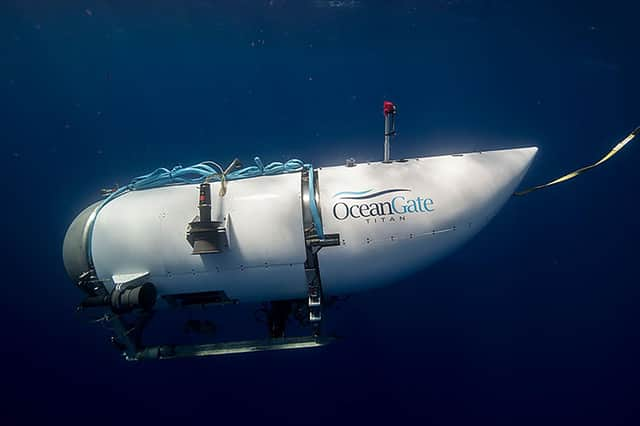Titan Submersible: What went wrong, what do experts think and was it doomed to follow in Titanic's wake?


After the Titan submersible lost communication on Sunday June 18, it was clear to many experts within the field that there would be little chance of a happy ending.
Shortly after the vessel lost contact on Sunday June 18, the US Navy detected sounds which were “consistent with an implosion”.
Advertisement
Hide AdAdvertisement
Hide AdWith the five people on board now confirmed to have died, questions surrounding the safety of submersibles are being raised.
But what do we know about what happened so far, and what are experts from across the industry saying?
What happened with the Titan submersible?
After losing communication with the surface on Sunday, officials began a massive search operation to find the Titan vessel shortly after.
The four day search came to a sad conclusion on Thursday when the Coast Guard discovered “five different major pieces of debris” from the Titan.
It followed intensive searches, warnings from the Coast Guard about falling oxygen levels and false hope in the form of underwater sounds.
It emerged that following the initial loss of contact on Sunday, the US Navy had picked up sounds “consistent with an implosion”.
The vessel was constructed from carbon fibre and titanium. If any cracks or faults developed while descending, the pressure would become overwhelming and cause an instantaneous implosion.
There is no possible way that any of the five people on board could have survived.
Advertisement
Hide AdAdvertisement
Hide AdWas the Titan submersible safe?
Since the vessel went missing, questions have been raised about the safety on board.
A CBS journalist, David Pogue, last year joined one of OceanGate’s excursions. He reported that beforehand he had to sign a waiver which described the vessel as "experimental" and that it had "not been approved or certified by any regulatory body, and could result in physical injury, disability, emotional trauma or death".
During his exploration in the Titan, communication failed with the sub lost on the ocean floor for two and a half hours before it was hoisted up and out of the water.
Those inside the vessel must be bolted in from the outside and each trip would start with 96 hours of life support. The five individuals within the vessel must sit in a small and narrow cylinder for a mission which can often last 12 hours.
The sub was piloted using a modified but still recognisable Logitech brand games controller, but while this may raise eyebrows it is actually fairly common. The US Military often use Xbox controllers to control equipment including tanks and submarines.


Insight from experts within the submersible industry had previously raised their concerns over OceanGate’s submersible in 2018.
William Kohnen the president and CEO of Hydrospace Group, a company which provides expert knowledge of underwater vehicle systems and pressure vessels, expressed his fears that Titan’s design and construction was not being tested by a third party.
Mr Kohnen wished for OceanGate, whose CEO Stockton Rush was a passenger on the Titan, to adhere to industry standards, to take responsibility and follow industry standards where Mr Rush claimed regulators were stifling innovation.
Advertisement
Hide AdAdvertisement
Hide AdIn an earlier interview with Mr Pogue, Mr Rush said: “I don't think it's very dangerous. If you look at submersible activity over the last three decades, there hasn't even been a major injury, let alone a fatality.
